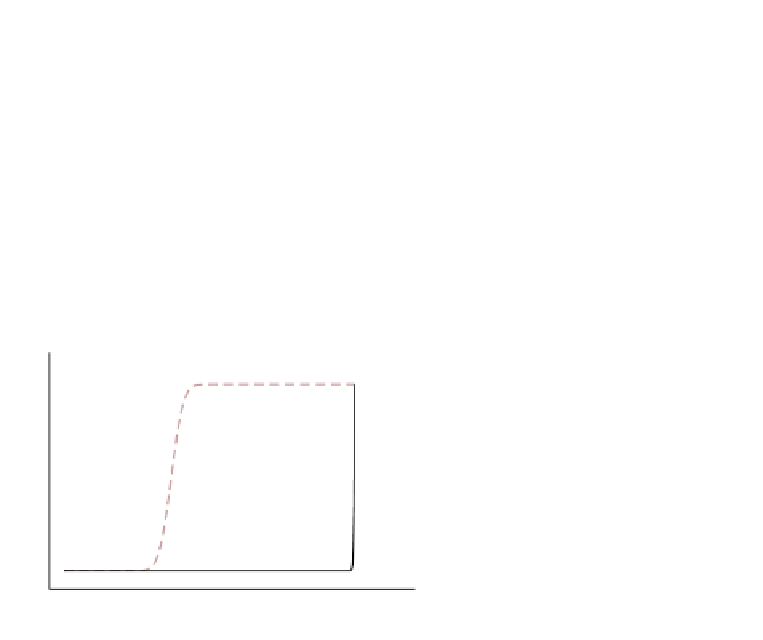Information Technology Reference
In-Depth Information
1.00
1.0
(a)
(b)
C
active linking
n
y
f
A
0.8
C
l
n
f
A
0.75
C
D
A B
A
4
C
D
2
A
B
C
0.6
D
B
5
3
A
C
2
1
/
3
0.50
B
5
/
6
D
1
A B
A
4
C
D
0.4
C
2
D
B
5
3
0.2
0.25
A
B
C
D
C
A
2
1
/
3
complete network
B
5
/
6
D
1
0.0
0.00
0
20
40
60
80
100
0.01
0.1
1
C
Initial number of A
Time scale ratio W
Fig. 16.3. Active linking eectively changes the payo matrix and the nature of the game. (a) We
start from a complete network without structure dynamics (W = 0) and a Prisoner's Dilemma
game. In this case, the xation probability of C (full line) is essentially zero for all initial numbers
of C. With active linking (dashed line), the game turns into a Stag Hunt game. In this case,
C becomes risk dominant and the xation probability of C exceeds 0:5 if the initial number of
C individuals is larger than 36. (b) Numerical simulations reveal the range of validity of our
analytical approximations. We start from 50% cooperating individuals. For small W, cooperators
never reach xation. But already for W = 0:1, their xation probability is close to one. Thus,
moderate active linking is sucient to make cooperation the dominant strategy here (averages
over 100 realizations, population size N = 100, intensity of selection = 0:05,
C
=
D
= 0:4,
CC
= 0:16,
CD
= 0:80 and
DD
= 0:32.)
16.3.IndividualBasedLinkingDynamics:LocalLinkFormation
In the model discussed in Section 16.2, we have a uctuating number of links and
analytical results in the two limits where the time scale of linking dynamics and
strategy dynamics are well separated, allowing for the mean-eld treatment con-
sidered. We now introduce an alternative description in which the number of links
is conserved, but in which decision to maintain or rewire a link results both from
individual preference in the choice of partners and negotiation between individuals
linked [Santos et al. (2006a); Van Segbroeck et al. (2008)]. Such an individual based
decision making cannot be dealt with at a mean-eld level and calls for a numerical
implementation.
16.3.1. Specication of the linking dynamics
To reduce the number of parameters, let us start by restricting the space of possible
games by xing R = 1 and P = 0, while 1 S 1 and 0 T 2.
C D
C 1 S
D T 0
:
(16.13)
This spans the four dynamical outcomes introduced before: a) HG (S > 0 and
T < 1); b) SG (S > 0 and T > 1); c) SH (S < 0 and T < 1) and d) PD (S < 0 and
T > 1) (see Section 16.2.2).






















